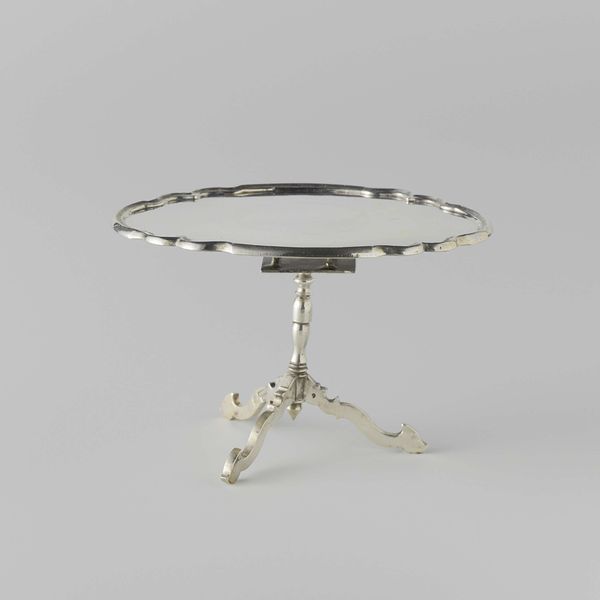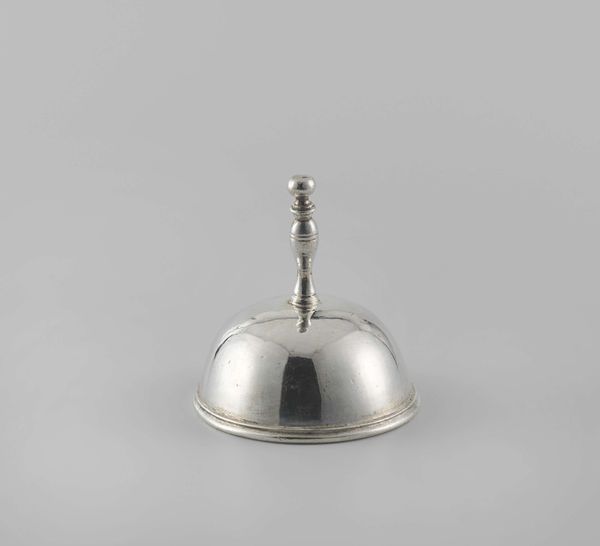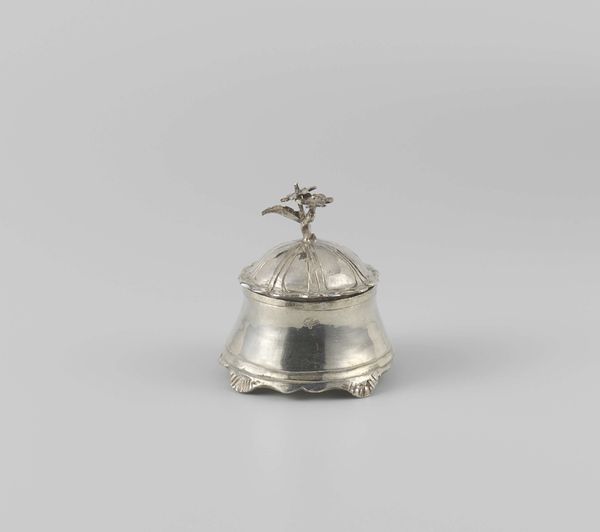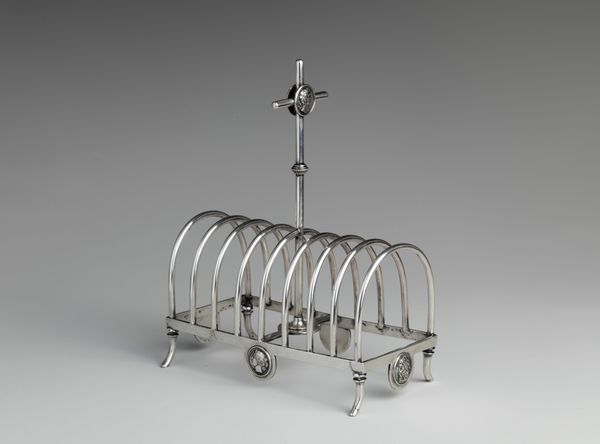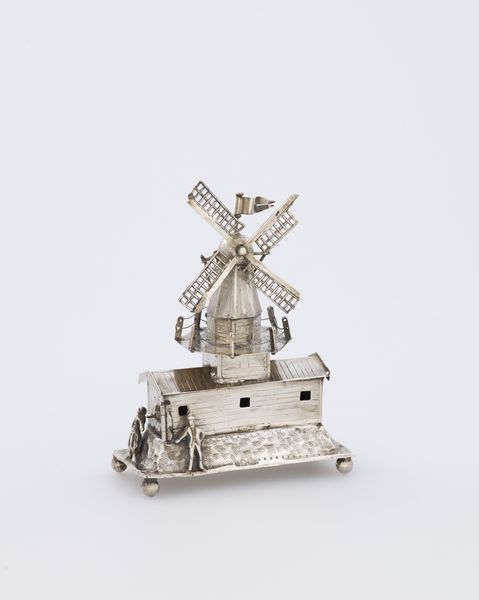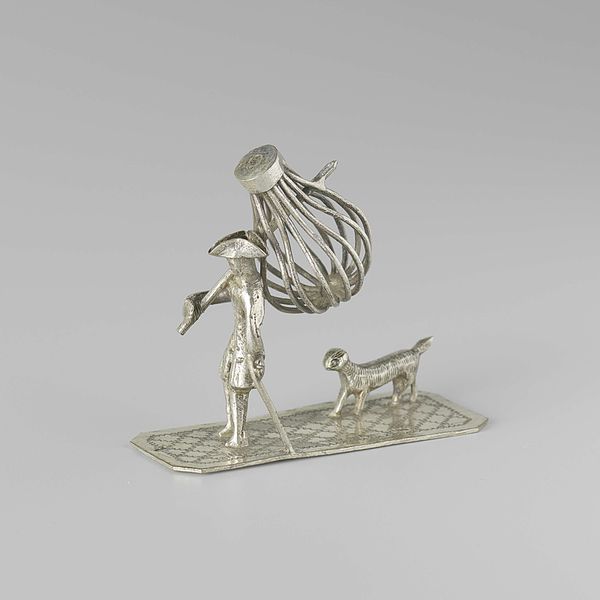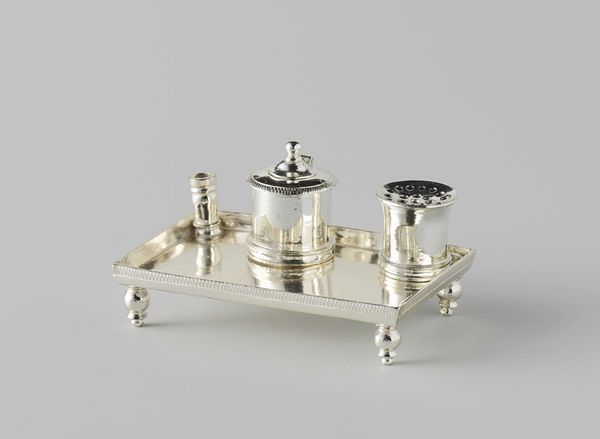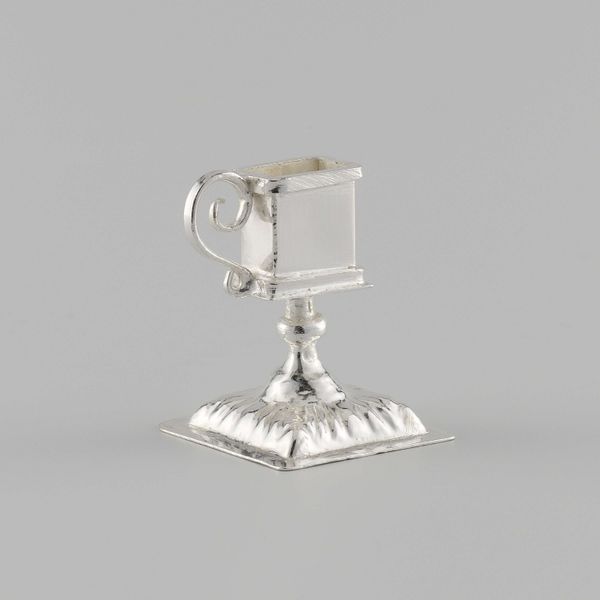
silver, metal, sculpture
#
silver
#
baroque
#
metal
#
figuration
#
sculpture
#
decorative-art
#
miniature
Dimensions: length 4.2 cm, width 4.2 cm, height 5 cm, weight 32.96 gr
Copyright: Rijks Museum: Open Domain
This is Willem van Strant’s ‘Girl in a walker’, made sometime between the late 17th and early 18th century from silver. The creation of this miniature began with the selection of raw silver. The silversmith would have melted it down, formed it into sheets and wires, and then used a range of tools – hammers, dies, and files – to shape the metal into the intricate components we see here. The wheels, frame, and figure of the girl were all crafted separately before being joined together, likely using soldering techniques, demanding immense skill and precision. The reflective, cool nature of the silver lends a precious quality to the humble subject of a child’s walker. Such a detailed representation suggests the importance of early childhood, but also the wealth required to commission such an object. The labor involved speaks to the hierarchies of the period, where skilled artisans served a privileged class. Appreciating these aspects gives us a richer understanding, challenging the traditional separation of craft from art.
Comments
No comments
Be the first to comment and join the conversation on the ultimate creative platform.



